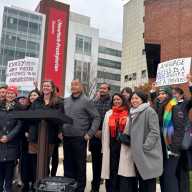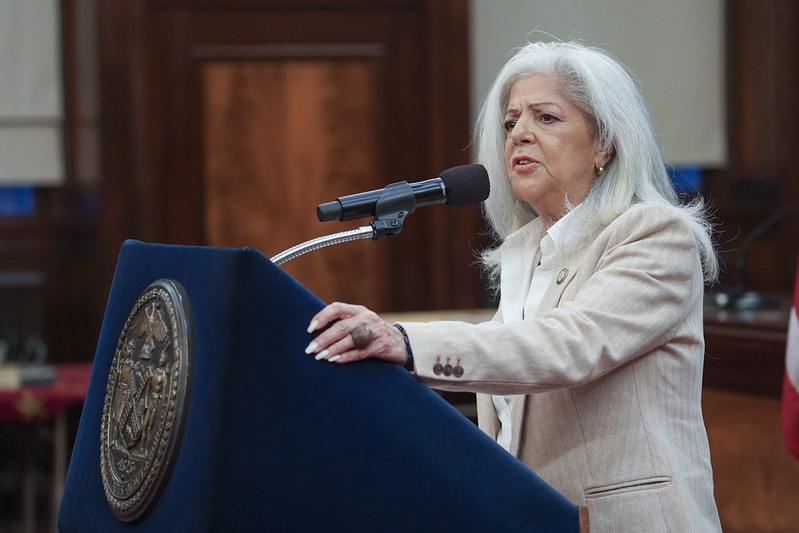City Councilmember Leroy Comrie’s repeated calls that free bottled water be provided to southeast Queens seniors met a brick wall as the city insisted upon the safety of the local water supply following the recent discovery of its contamination with a known carcinogen.
“In light of the recent discovery of tetrachloroethylene, commonly known as PERC, in the drinking water of the southeast Queens community, I want to reiterate my call for the city to undertake efforts to provide free water to those in the affected area, particularly senior citizens who may be home-bound or unable to purchase it,” Comrie said at an emergency town hall held in Queens Village last Friday, May 11 to address the crisis.
“My office has fielded dozens of calls from concerned seniors who are confused and quite literally afraid to drink their water. And in many instances, some of these seniors are on limited income and cannot afford to purchase water,” he said, adding that PERC cannot be removed through boiling.
As part of its routine water testing program, the New York City Department of Environmental Protection (DEP) detected the chemical, which is used primarily in dry cleaning and auto-body repair, on May 4 in samples collected in the Jamaica area three days earlier.
“We don’t have any plans to provide bottled water,” said DEP spokesperson Ian Michaels, who indicated that as of Sunday, May 13 all of 21 samples taken in the affected areas had tested negative for the presence of PERC. “There are no known health effects for the level of PERC found in the water,” he said.
Comrie also called for the city to provide free cancer screenings for affected residents. “With all the empirical evidence we know about the effects of PERC, it is incumbent upon the Department of Health (DOH) to begin providing free screening evaluations for residents in this affected area who desire them, so they have every opportunity to get early treatment,” he said.
According to DOH spokesperson Sara Markt, an increased risk of developing cancer is related to long-term exposure to high levels PERC, not the small levels found in the Queens water supply that were present for a matter of weeks, at most.
“Obviously we advocate screening,” for people at risk of developing certain cancers such as breast, cervical and prostate, said DOH spokesperson Sara Markt. “As related to this incident it doesn’t make sense because the levels [of PERC] were so low.”
In the mid-1980’s the United States Department of Environmental Protection placed PERC in an intermediate category between probable and possible human carcinogen and is currently reassessing its potential carcinogenicity, according to its web site.
However, in 1988 the state of California placed PERC on its annually updated list of known carcinogens and reproductive toxins.
Comrie took issue with the frequency of DEP’s water testing. “The contamination of our water could have been taking place for nearly three weeks before it was discovered and people were drinking it during that time,” he said.
“There needs to be more frequent testing and I’m outraged that the City has either not recognized this or hasn’t prioritized the safety of the residents of southeast Queens.”
On Monday, May 14 Michaels said that the DEP planned to begin testing the water supply in the affected area more frequently, however he was unable to say when or with what frequency the additional testing would take place.
“Our city must act now and be pro-active in addressing this issue. It is my hope that we will do everything in our power to address the concerns of the residents of Southeast Queens and address the environmental challenges that have been revealed this week,” said Comrie.






























